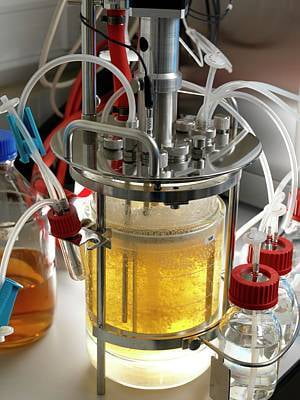plasmid DNA production—microinjection-grade

NovoHelix utilizes proprietary anion exchange (AEX) chromatography to purify microinjection-grade plasmid DNA (pDNA). Our workflow for purification of supercoiled plasmids includes validation by restriction digestion and analysis by gel electrophoresis. Endotoxin levels are generally very low (0.05 – 0.5 ng LPS/µg) via our proprietary extraction method and are adequate for sensitive applications such as zygotic microinjection of mammalian embryos. The pDNA is predominantly in its supercoiled topology and free of RNA and protein contamination. Additional validation by restriction digestions (greater than 3 endonucleases) and pDNA sequencing is available with commensurate fee schedule.
Purification yields are based on high-copy plasmids with a pUC origin of replication, or equivalent, a pDNA size less than 15-kb and free of toxic sequences or unstable structures such as nucleotide repeats, homopolymeric runs, AT-rich sequences, etc. NovoHelix can accommodate unconventional vectors such as minicircles, linear vectors such as DNA ministrings, vectors that contain the R6K-gamma origin of replication, large pDNAs (greater than 30-kb, even BACs), and plasmids that contain unconventional selection cassettes. Please contact us for pricing, turnaround time and yields for nonstandard vectors or conventional plasmids that contain challenging sequences such as repeats.
services
technology
references
forms
quote request
services
Service
Catalog Nr
Service Description
Price
Mini - prep
MBPP001
Mini prep low endotoxin pDNA production service (estimated yield of 10 micrograms for high copy vectors)
$70.00
Midi - prep
MBPP002
Midi prep low endotoxin pDNA production service (estimated yield of 0.2 mg for high copy vectors)
$145.00
Maxi - prep
MBPP003
Maxi prep endotoxin-free pDNA production service (estimated yield of 1 mg for high copy vectors)
$215.00
Mega - prep
MBPP004
Mega prep endotoxin-free pDNA production service (estimated yield of 5 mg for high copy vectors)
$520.00
Giga - prep
MBPP005
Giga prep endotoxin-free pDNA production service (estimated yield of 10 mg for high copy vectors)
$925.00
Tera - prep
MBPP006
Tera prep large-scale chromatographic pDNA purification: high-purity, endotoxin-free DNA in milligram to gram*
Endotoxin:
Lipopolysaccharide (LPS) was determined by the standard LAL (Limulus amebocyte lysate) test to be < 0.5 EU/µg. Due to potential environmental sustainability concerns (collection of the hemolymph used in pharmaceutical testing may negatively affect horseshoe crab populations), a quantitative and more sensitive endotoxin assay was developed using a pyrogen‐testing cell model with knock-in (targeted, single-copy integration) of TLR4/CD14/MD2 at the safe harbor locus AAVS1/PPP1R12C on human chromosome 19. The TLR4/CD14/MD2 assay is used as an orthogonal screen for LPS in lieu of the LAL method and has a detection limit of 0.005 EU/ml.
Storage/Stability:
Microinjection-grade plasmid DNA is supplied in predominantly its supercoiled topology and free of RNA and protein contamination. After drop dialysis, the plasmid is provided in 1x TE stabilization buffer or microinjection buffer and remains bioactive for 3 weeks if maintained refrigerated 2º to 8ºC (35º to 46ºF). Stock solutions of the plasmid in its concentrated form can be stored at least 3 months at -20°C and at least 12 months at -80°C from the date of manufacture with no loss of activity. For long term storage, add 0.1% w/v carrier protein such as recombinant human serum albumin (HSA) and avoid repeated freeze-thaw cycles by aliquoting. Multiple freeze-thaw cycles reduce potency and, therefore, aliquoting working stocks is strongly recommended. To maximize recovery, spin the microcentrifuge tube prior to opening but do not vortex.
Disclaimer & Precautions:
This product is solely for research and development use only and may be subject to conditional use and licensing restrictions. The product shall not be used as an advanced pharmaceutical intermediate (API) or investigational drug or a biologic. This product is not intended to be used as a therapeutic agent or facilitate clinical diagnosis or be used as an in vitro diagnostic (IVD) product.
The Food and Drug Administration (FDA) and Center for Biologics Evaluation and Research (CBER) define an IVD as:
“In vitro diagnostic products are those reagents, instruments, and systems intended for use in the diagnosis of disease or other conditions, including a determination of the state of health, in order to cure, mitigate, treat, or prevent disease or its sequelae. Such products are intended for use in the collection, preparation, and examination of specimens taken from the human body. These products are devices as defined in section 201(h)of the Federal Food, Drug, and Cosmetic Act (the act), and may also be biological products subject to section 351 of the Public Health Service Act. Title 21, Code of Federal Regulations (CFR), section 809.3(a).”
This product shall not be used or formulated in any agricultural, pesticidal, veterinary or animal products, food additives, or household chemicals or any other unspecified use. Please consult the Safety Data Sheet for information regarding hazards and safe handling practices. NovoHelix distributes products for basic and translational research use only. NovoHelix will report any unspecified use to respective regulatory authorities for enforcement to ensure the safeguarding of our research products from potential abuse.
Notice to purchaser:
The purchase price of this product includes a limited, non-transferable license under U.S. and foreign patents or applications owned by NovoHelix to use this product. No other license under these patents or applications is conveyed expressly or by implication by purchase of this product.
technology
references
Sayers JR, Evans D, Thomson JB. Identification and eradication of a denatured DNA isolated during alkaline lysis-based plasmid purification procedures. Anal Biochem. 1996 Oct 15;241(2):186-9. PubMed PMID: 8921185.
Yu J, Zhang Z, Cao K, Huang X. Visualization of alkali-denatured supercoiled plasmid DNA by atomic force microscopy. Biochem Biophys Res Commun. 2008 Sep 26;374(3):415-8. doi: 10.1016/j.bbrc.2008.06.106. Epub 2008 Jul 3. PubMed PMID: 18602366.
Cloninger C, Felton M, Paul B, Hirakawa Y, Metzenberg S. Control of pH during plasmid preparation by alkaline lysis of Escherichia coli. Anal Biochem. 2008 Jul 15;378(2):224-5. doi: 10.1016/j.ab.2008.04.017. Epub 2008 Apr 11. PubMed PMID: 18452699.
Paul B, Cloninger C, Felton M, Khachatoorian R, Metzenberg S. A nonalkaline method for isolating sequencing-ready plasmids. Anal Biochem. 2008 Jun 15;377(2):218-22. doi: 10.1016/j.ab.2008.03.005. Epub 2008 Mar 7. PubMed PMID: 18374653.
Lao UL, Kostal J, Mulchandani A, Chen W. Affinity purification of plasmid DNA by temperature-triggered precipitation. Nat Protoc. 2007;2(5):1263-8. PubMed PMID: 17546022.
Sambrook J, Russell DW. Preparation of Plasmid DNA by Alkaline Lysis with SDS: Maxipreparation. CSH Protoc. 2006 Jun 1;2006(1). pii: pdb.prot4090. doi: 10.1101/pdb.prot4090. PubMed PMID: 22485495.
Sambrook J, Russell DW. Preparation of Plasmid DNA by Alkaline Lysis with SDS: Minipreparation. CSH Protoc. 2006 Jun 1;2006(1). pii: pdb.prot4084. doi: 10.1101/pdb.prot4084. PubMed PMID: 22485489.
Prazeres DM, Ferreira GN, Monteiro GA, Cooney CL, Cabral JM. Large-scale production of pharmaceutical-grade plasmid DNA for gene therapy: problems and bottlenecks. Trends Biotechnol. 1999 Apr;17(4):169-74. Review. PubMed PMID: 10203776.
Sun B, Yu X, Yin Y, Liu X, Wu Y, Chen Y, Zhang X, Jiang C, Kong W. Large-scale purification of pharmaceutical-grade plasmid DNA using tangential flow filtration and multi-step chromatography. J Biosci Bioeng. 2013 Sep;116(3):281-6. doi: 10.1016/j.jbiosc.2013.03.015. Epub 2013 May 7. PubMed PMID: 23660074.
Abdulrahman A, Ghanem A. Recent advances in chromatographic purification of plasmid DNA for gene therapy and DNA vaccines: A review. Anal Chim Acta. 2018 Sep 26;1025:41-57. doi: 10.1016/j.aca.2018.04.001. Epub 2018 Apr 17. Review. PubMed PMID: 29801607.
Silva-Santos AR, Alves CP, Prazeres DM, Azevedo AM. Separation of plasmid DNA topoisomers by multimodal chromatography. Anal Biochem. 2016 Jun 15;503:68-70. doi: 10.1016/j.ab.2016.03.012. Epub 2016 Mar 28. PubMed PMID: 27033004.
Gibson EG, Oviatt AA, Osheroff N. Two-Dimensional Gel Electrophoresis to Resolve DNA Topoisomers. Methods Mol Biol. 2020;2119:15-24. doi: 10.1007/978-1-0716-0323-9_2. PubMed PMID: 31989511; PubMed Central PMCID: PMC7012906.
Sun J, Tian Y, Du Y, Wang Z, Zhao G, Ma Y, Zheng M. A cautionary tale of cross-contamination among plasmids from commercial suppliers. Biotechniques. 2020 Jan;68(1):14-21. doi: 10.2144/btn-2019-0018. Epub 2019 Nov 22. PubMed PMID: 31755299.
forms
quote request




